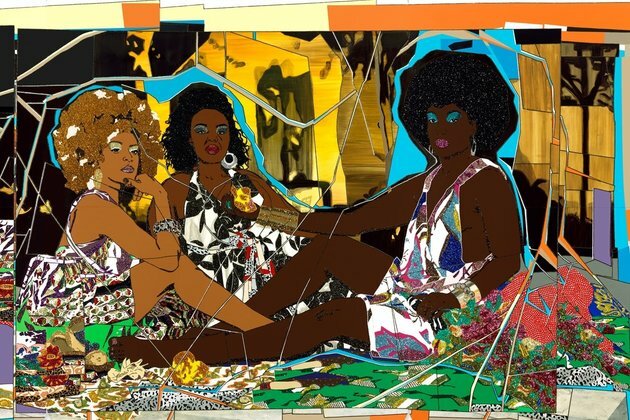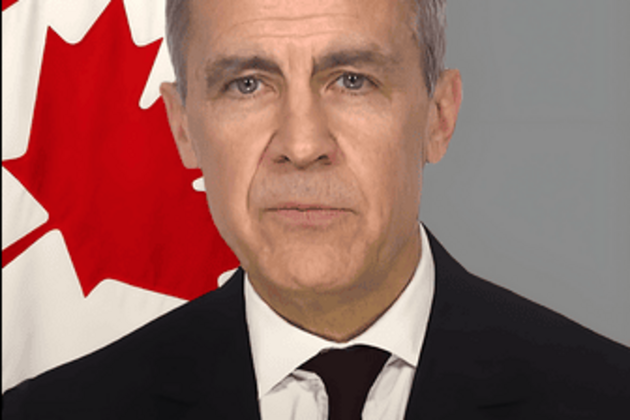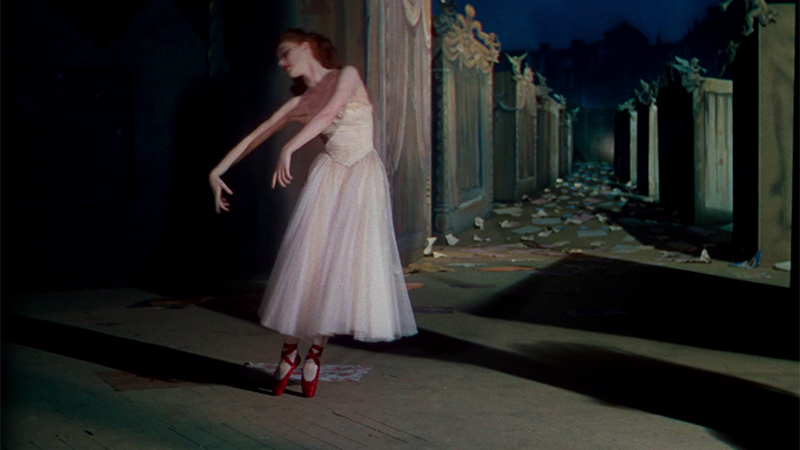Black Canadian women artists detangle the roots of Black beauty
The Conversation
14 May 2019, 11:06 GMT+10

Renowned visual artist Mickalene Thomas has taken over the fifth-floor gallery space of the Art Gallery of Ontario (AGO) with her show Femmes Noires. Working with curator Julie Crooks, it is the first time the Brooklyn-based artist has staged an exhibition in Canada and it is only the second time the AGO has exhibited the work of a Black woman artist.
Thomass exhibit is a powerful and extraordinary contemplation on the intersections of being both Black and a woman. Thomas takes inspiration from multiple art forms, movements and histories, like Impressionism, and focuses on issues such as race, representation, sexuality and Black celebrity culture.
As a Black woman, it is the first time I have ever walked the floors of the AGO and have seen myself reflected back at me. However, something for Canadians like myself to note is that Thomass visioning of Black womanhood is from an American point of view.
(The last solo exhibition by a Black woman at the AGO took place in 2010 This You Call Civilization? featuring the work of Kenyan-born, New York-based Wangechi Mutu.)
Blackness in Canada has often been framed through an African-American lens. This representation (or lack of) is an issue I fully explore in my book, Beauty in a Box: Detangling the Roots of Canadas Black Beauty Culture.
For example, one of the reasons why Black beauty culture has not received much attention in Canada until now is because the task of locating Black voices in the Canadian historical record has been and remains a difficult challenge. Across the border, there are archival collections dedicated to African Americans, such as the Schomburg Center for Research in Black Culture in New York City, but we dont have anything like this in Canada.
Media circulates African American experiences
When I started researching Black beauty in Canada, most people were shocked there was enough material for me to write about in a book. The assumption was that the topic would have to focus squarely on African-American women.
For decades, Canadian cultural institutions have consumed African-American desires and fantasies as stand-ins for Black Canada. As a result, Black Canadian representations in popular culture have been rendered invisible.
Throughout the 20th century, cultural and economic practices were co-produced through the circulation of African-Americanness through media. From African-American TV shows in the 1970s, films in the 1980s and beyond, Canadians probably know more about the African-American experience than they do about Black Canadians because of media culture.
Canadas media culture has participated in the creation of identities that privileged African-American images, products and ideologies. These identities originally crossed the U.S./Canada border as desires and fantasies represented in advertising and, later, television and film, and today, art.
Black Canadian women are here
When Trey Anthonys da Kink in My Hair TV series appeared from 2007-09 (based on the play of the same name), it was the first comedy series created by and starring Black women on Canadian national television. The broadcast of da Kink in My Hair happened nearly 40 years after Julia (196871) in which Diahann Carroll became the first African American woman to star on a U.S. sitcom in a non-stereotypical role. The representation gap between African American women and Black women in Canada spans decades.
To make up for some of this historical invisibility, this month and throughout the winter, the AGOs In the Living Room series will feature Black Canadian women engaging with Thomass art and discussing their experiences.
Each talk will be set in the Femme Noires living room space, which is modelled after Thomass childhood home growing up in New Jersey. The patchwork chairs and books from African-American women authors become the art installation. Visitors are called to engage intimately with the paintings, installations and videos on the walls but also the productive space, the living room, that birthed Thomass art in the first place.
The first discussion in the series, The Dis/Appearing Black Body, will feature portrait photographer Jorian Charlton and Shantel Miller, an artist-in-resident at Nia Centre for the Arts in Toronto, to discuss Black bodies, power and the gaze.
Black beauty is always political
While I can say much about the differences between Black Canadian experiences and African-American ones, there are universal Black beauty experiences that unite all women of African descent. For example, one of these experiences is the caring for and discussions around Black hair. Some of these public conversations are hurtful to many Black women.
The New York-based online platform, Hello Beautiful, which targets their articles toward Black women, recently asked why Black women should have to defend wigs and weaves more than other women. The article explores why Black women are constantly asked to defend being women and all the things we do, like our hair, to feel beautiful.
On the one hand, our hair is connected to many painful childhood memories of being teased by other children (and sometimes adults) about our various braided hairstyles. On the other hand, natural hairstyles like Afros, dreadlocks or cornrows (tightly braided rows of hair) might denote a Black womans politics, but they can also be just a hairstyle or her preference, with no political meaning whatsoever.
Black women who wear hair weaves or wigs can also be the subject of ridicule. In 2017, former Fox News host Bill OReilly was forced to apologize to California Congresswoman Maxine Waters, who is African American, when he made disparaging comments about her hair on the cable news program, Fox and Friends. He described her straightened hair as a James Brown wig.
Black hair is constantly debated, politicized and misrepresented in media, art and popular culture. A simple decision about wearing it natural or straightened could result in punitive action not in America, but right here in Canada. This was the case for a waitress-in-training who lost her job at Jack Astors because she wore her hair in a bun, and not down as required by female wait staff while working at the restaurant.
Black hair stories resonate with Black Canadian women, too. But resonance is not the same as representation.
Why have Black Canadian women artists not been given the same opportunity to exhibit their work as solo artists in Canada? This question about Black Canadian artists and how Black art has been represented and circulated has become prominent in Canadian media lately.
In an article for Canadian Art, Connor Garel wondered why no Black Canadian woman has ever had a major solo exhibition at the Art Gallery of Ontario (AGO).
Curator Ashley McKenzie-Barnes wrote an article for the Toronto Star, and argued that Canadian art fairs, public art installations, festivals, major institutions and galleries need to make space for Black Canadian artists. She is right. Were doing the work now we need the space to get recognized for it.
 Share
Share
 Tweet
Tweet
 Share
Share
 Flip
Flip
 Email
Email
Watch latest videos
Subscribe and Follow
Get a daily dose of New York Telegraph news through our daily email, its complimentary and keeps you fully up to date with world and business news as well.
News RELEASES
Publish news of your business, community or sports group, personnel appointments, major event and more by submitting a news release to New York Telegraph.
More InformationBusiness
SectionWall Street diverges, but techs advance Wednesday
NEW YORK, New York - U.S. stocks diverged on Wednesday for the second day in a row. The Standard and Poor's 500 hit a new all-time...
Greenback slides amid tax bill fears, trade deal uncertainty
NEW YORK CITY, New York: The U.S. dollar continues to lose ground, weighed down by growing concerns over Washington's fiscal outlook...
Taliban seeks tourism revival despite safety, rights concerns
KABUL, Afghanistan: Afghanistan, long associated with war and instability, is quietly trying to rebrand itself as a destination for...
Nvidia execs sell $1 billion in stock as AI boom drives record prices
SANTA CLARA, California: Executives at Nvidia have quietly been cashing in on the AI frenzy. According to a report by the Financial...
Tech stocks slide, industrials surge on Wall Street
NEW YORK, New York - Global stock indices closed with divergent performances on Tuesday, as investors weighed corporate earnings, central...
Canada-US trade talks resume after Carney rescinds tech tax
TORONTO, Canada: Canadian Prime Minister Mark Carney announced late on June 29 that trade negotiations with the U.S. have recommenced...
New York
SectionGreenback slides amid tax bill fears, trade deal uncertainty
NEW YORK CITY, New York: The U.S. dollar continues to lose ground, weighed down by growing concerns over Washington's fiscal outlook...
COVID-19 source still unknown, says WHO panel
]LONDON, U.K.: A World Health Organization (WHO) expert group investigating the origins of the COVID-19 pandemic released its final...
Euro, pound surge as U.S. rate cut odds grow after Powell hint
NEW YORK CITY, New York: The U.S. dollar tumbled this week, hitting its lowest levels since 2021 against the euro, British pound, and...
Sam’s Club fulfillment center to shut in Texas, jobs impacted
NEW YORK CITY, New York: Walmart is set to close a major Sam's Club fulfillment center in Fort Worth, Texas, as part of a shift in...
US is no longer our ally Ukrainian MP
Multiple Kiev officials have criticized the halt of US weapon supplies Kiev is no longer a priority at the center of US foreign policy,...
Russiagate was a ploy to screw Trump CIA boss
The Obama administrations top spies manipulated the probe from the onset, according to John Ratcliffe A US intelligence report on...













